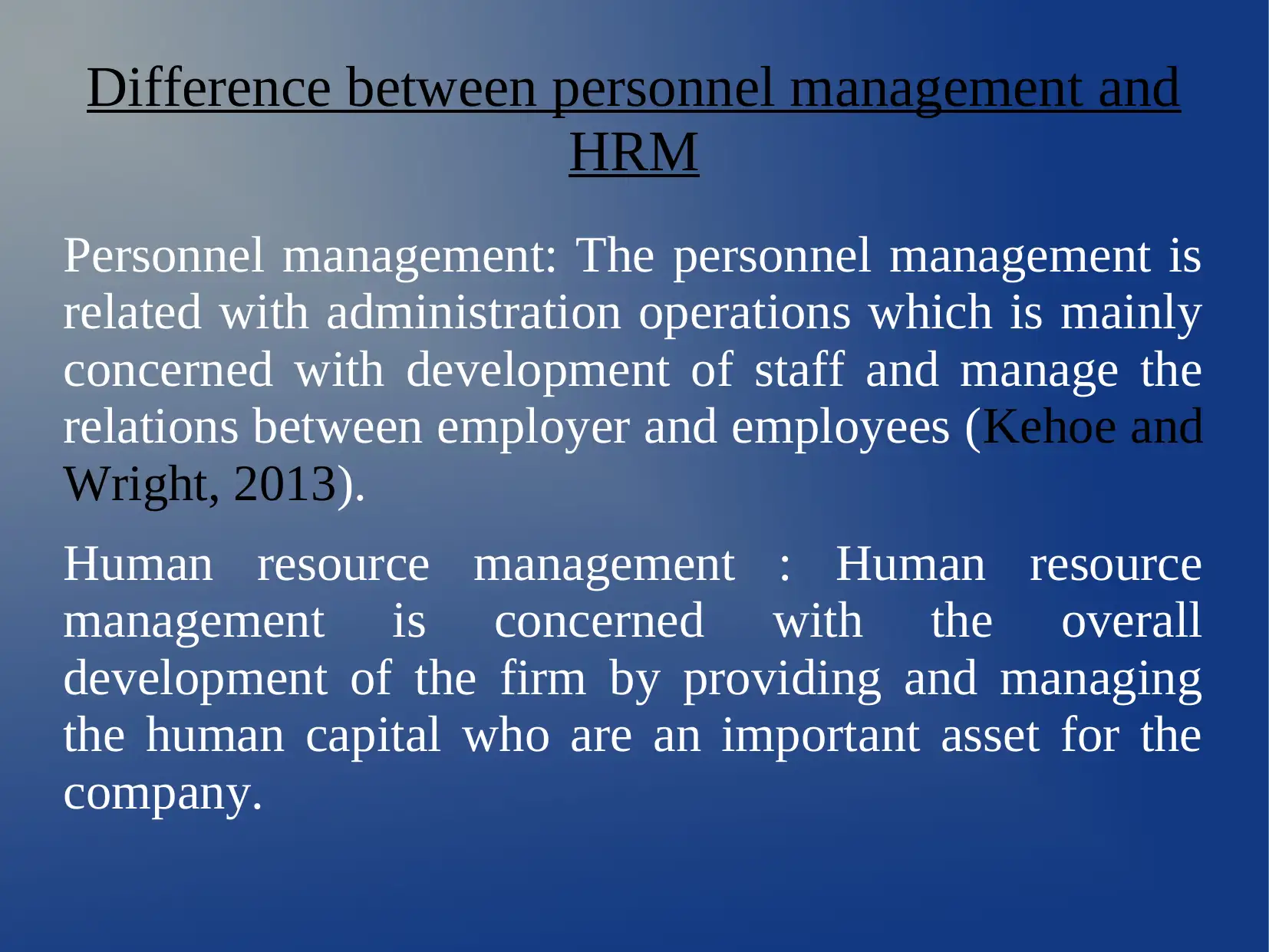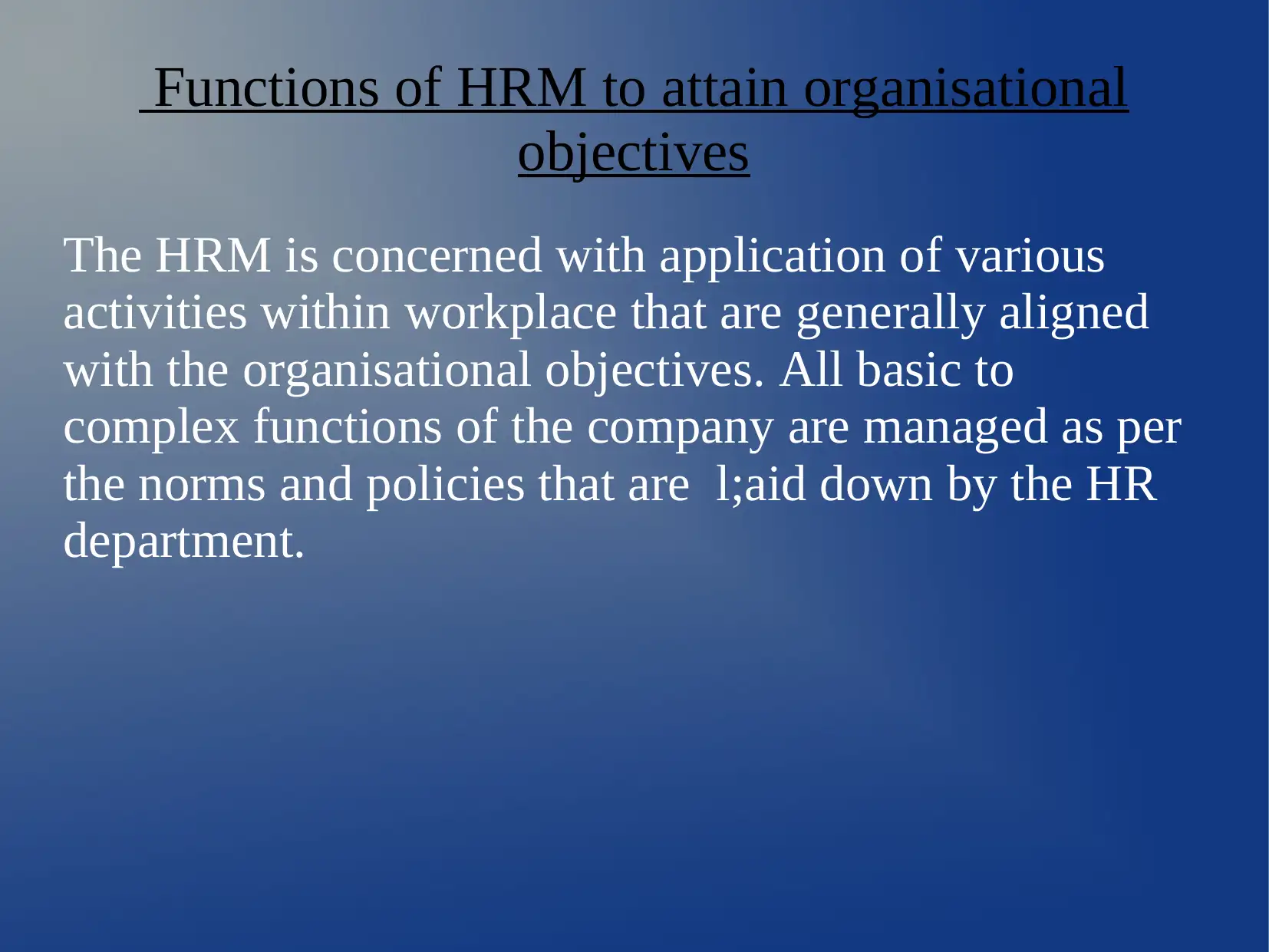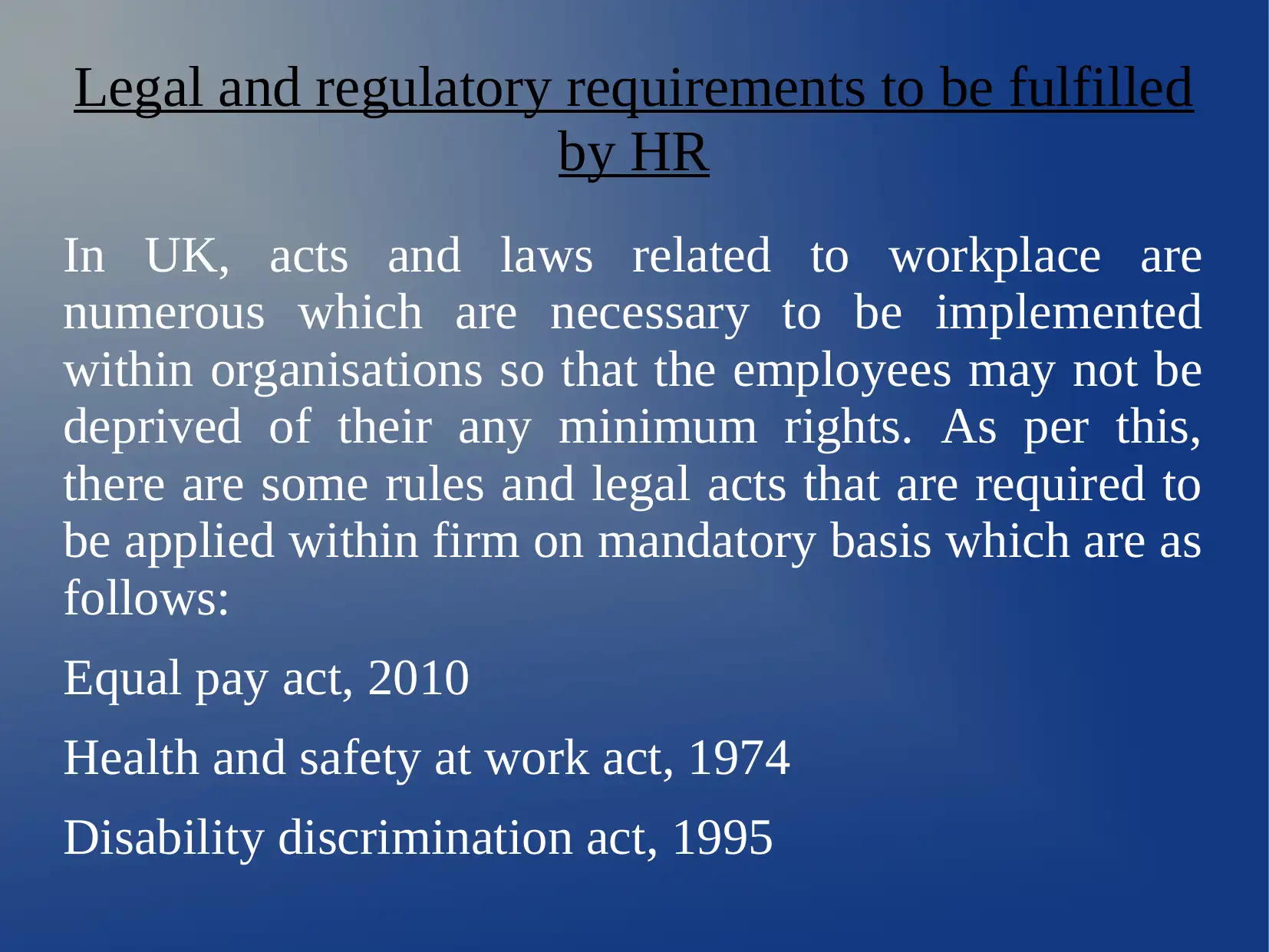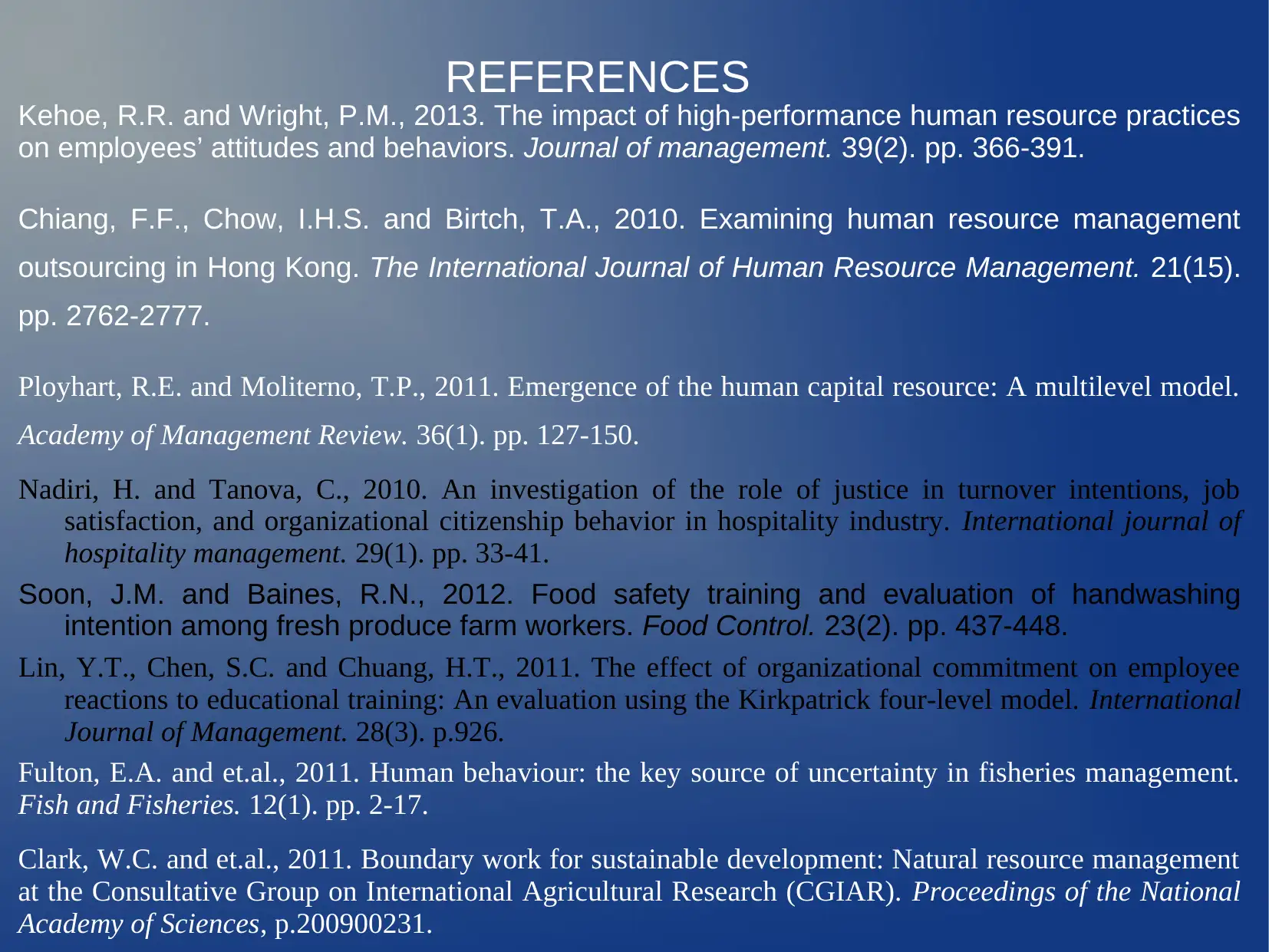A Detailed Comparison: Personnel Management and HRM Strategies
VerifiedAdded on 2023/04/04
|10
|706
|282
Essay
AI Summary
This essay provides a detailed comparison between personnel management and Human Resource Management (HRM), highlighting the traditional approach of personnel management versus the modern, strategic focus of HRM. It discusses the differences in their approaches to managing employees, decision-making processes, and their overall contribution to organizational objectives. The essay also outlines the functions of HRM in achieving company goals, including recruitment, employee relations, and training, and describes the roles and responsibilities of line managers. Furthermore, it identifies key legal and regulatory requirements in the UK that HR departments must fulfill, such as the Equal Pay Act 2010 and the Health and Safety at Work Act 1974. Desklib provides this document along with a host of study tools for students.

Difference between personnel management and
HRM
Personnel management: The personnel management is
related with administration operations which is mainly
concerned with development of staff and manage the
relations between employer and employees (Kehoe and
Wright, 2013).
Human resource management : Human resource
management is concerned with the overall
development of the firm by providing and managing
the human capital who are an important asset for the
company.
HRM
Personnel management: The personnel management is
related with administration operations which is mainly
concerned with development of staff and manage the
relations between employer and employees (Kehoe and
Wright, 2013).
Human resource management : Human resource
management is concerned with the overall
development of the firm by providing and managing
the human capital who are an important asset for the
company.
Paraphrase This Document
Need a fresh take? Get an instant paraphrase of this document with our AI Paraphraser

Cont..
Personnel management Human resource management
The approach of personnel management
is traditional as it applies conventional
models to manage the people of
company.
Human resource management is a
modern approach where it attempts to
manage staff by identifying their
strengths.
The personnel management is more
related with the routine and basic
functions of the enterprise.
The HRM is related with the vital function
of the entity where it is supposed to
perform different strategic functions
(Chiang, Chow and Birtch, 2010).
The decision-making process in this type
of management is relatively slow as it
moves as per the traditional approaches.
Decision making process in HRM is fast
as it is more related with the strategic
functions.
Personnel management Human resource management
The approach of personnel management
is traditional as it applies conventional
models to manage the people of
company.
Human resource management is a
modern approach where it attempts to
manage staff by identifying their
strengths.
The personnel management is more
related with the routine and basic
functions of the enterprise.
The HRM is related with the vital function
of the entity where it is supposed to
perform different strategic functions
(Chiang, Chow and Birtch, 2010).
The decision-making process in this type
of management is relatively slow as it
moves as per the traditional approaches.
Decision making process in HRM is fast
as it is more related with the strategic
functions.

Cont..
The actions taken under this type
of approach is concerned with
basic procedures related to
management (Ployhart and Moliterno,
2011).
In HRM, the actions taken by
management is decided as per the
needs of business in a particular
situation.
It takes human capital of
organisation as an ordinary people
and concentrates on simple
functions of hiring, making
payrolls, compensations etc.
The HRM assumes all its staff as a
valuable assets that are important
for contributing in firm's success,
therefore concentrate on activities
to retain them within organisation
(Nadiri and Tanova, 2010).
The actions taken under this type
of approach is concerned with
basic procedures related to
management (Ployhart and Moliterno,
2011).
In HRM, the actions taken by
management is decided as per the
needs of business in a particular
situation.
It takes human capital of
organisation as an ordinary people
and concentrates on simple
functions of hiring, making
payrolls, compensations etc.
The HRM assumes all its staff as a
valuable assets that are important
for contributing in firm's success,
therefore concentrate on activities
to retain them within organisation
(Nadiri and Tanova, 2010).
⊘ This is a preview!⊘
Do you want full access?
Subscribe today to unlock all pages.

Trusted by 1+ million students worldwide

Functions of HRM to attain organisational
objectives
The HRM is concerned with application of various
activities within workplace that are generally aligned
with the organisational objectives. All basic to
complex functions of the company are managed as per
the norms and policies that are l;aid down by the HR
department.
objectives
The HRM is concerned with application of various
activities within workplace that are generally aligned
with the organisational objectives. All basic to
complex functions of the company are managed as per
the norms and policies that are l;aid down by the HR
department.
Paraphrase This Document
Need a fresh take? Get an instant paraphrase of this document with our AI Paraphraser

Cont..
In this sense, a number of functions that are performed
by the HRM which helps in attainment of company's
objectives have been encapsulated in the below
section:
Recruitment and selection
Employee relations
Training
In this sense, a number of functions that are performed
by the HRM which helps in attainment of company's
objectives have been encapsulated in the below
section:
Recruitment and selection
Employee relations
Training

Roles and responsibilities of line manager
Line managers are the persons who are responsible for
monitoring various types of activities within
organisation (Fulton and et.al., 2011). They act as a
link between managers and employees and assume
direct responsibilities of workers. Their roles and
responsibilities are numerous which have been
delineated below:
Line managers are the persons who are responsible for
monitoring various types of activities within
organisation (Fulton and et.al., 2011). They act as a
link between managers and employees and assume
direct responsibilities of workers. Their roles and
responsibilities are numerous which have been
delineated below:
⊘ This is a preview!⊘
Do you want full access?
Subscribe today to unlock all pages.

Trusted by 1+ million students worldwide

Legal and regulatory requirements to be fulfilled
by HR
In UK, acts and laws related to workplace are
numerous which are necessary to be implemented
within organisations so that the employees may not be
deprived of their any minimum rights. As per this,
there are some rules and legal acts that are required to
be applied within firm on mandatory basis which are as
follows:
Equal pay act, 2010
Health and safety at work act, 1974
Disability discrimination act, 1995
by HR
In UK, acts and laws related to workplace are
numerous which are necessary to be implemented
within organisations so that the employees may not be
deprived of their any minimum rights. As per this,
there are some rules and legal acts that are required to
be applied within firm on mandatory basis which are as
follows:
Equal pay act, 2010
Health and safety at work act, 1974
Disability discrimination act, 1995
Paraphrase This Document
Need a fresh take? Get an instant paraphrase of this document with our AI Paraphraser


REFERENCES
Kehoe, R.R. and Wright, P.M., 2013. The impact of high-performance human resource practices
on employees’ attitudes and behaviors. Journal of management. 39(2). pp. 366-391.
Chiang, F.F., Chow, I.H.S. and Birtch, T.A., 2010. Examining human resource management
outsourcing in Hong Kong. The International Journal of Human Resource Management. 21(15).
pp. 2762-2777.
Ployhart, R.E. and Moliterno, T.P., 2011. Emergence of the human capital resource: A multilevel model.
Academy of Management Review. 36(1). pp. 127-150.
Nadiri, H. and Tanova, C., 2010. An investigation of the role of justice in turnover intentions, job
satisfaction, and organizational citizenship behavior in hospitality industry. International journal of
hospitality management. 29(1). pp. 33-41.
Soon, J.M. and Baines, R.N., 2012. Food safety training and evaluation of handwashing
intention among fresh produce farm workers. Food Control. 23(2). pp. 437-448.
Lin, Y.T., Chen, S.C. and Chuang, H.T., 2011. The effect of organizational commitment on employee
reactions to educational training: An evaluation using the Kirkpatrick four-level model. International
Journal of Management. 28(3). p.926.
Fulton, E.A. and et.al., 2011. Human behaviour: the key source of uncertainty in fisheries management.
Fish and Fisheries. 12(1). pp. 2-17.
Clark, W.C. and et.al., 2011. Boundary work for sustainable development: Natural resource management
at the Consultative Group on International Agricultural Research (CGIAR). Proceedings of the National
Academy of Sciences, p.200900231.
Kehoe, R.R. and Wright, P.M., 2013. The impact of high-performance human resource practices
on employees’ attitudes and behaviors. Journal of management. 39(2). pp. 366-391.
Chiang, F.F., Chow, I.H.S. and Birtch, T.A., 2010. Examining human resource management
outsourcing in Hong Kong. The International Journal of Human Resource Management. 21(15).
pp. 2762-2777.
Ployhart, R.E. and Moliterno, T.P., 2011. Emergence of the human capital resource: A multilevel model.
Academy of Management Review. 36(1). pp. 127-150.
Nadiri, H. and Tanova, C., 2010. An investigation of the role of justice in turnover intentions, job
satisfaction, and organizational citizenship behavior in hospitality industry. International journal of
hospitality management. 29(1). pp. 33-41.
Soon, J.M. and Baines, R.N., 2012. Food safety training and evaluation of handwashing
intention among fresh produce farm workers. Food Control. 23(2). pp. 437-448.
Lin, Y.T., Chen, S.C. and Chuang, H.T., 2011. The effect of organizational commitment on employee
reactions to educational training: An evaluation using the Kirkpatrick four-level model. International
Journal of Management. 28(3). p.926.
Fulton, E.A. and et.al., 2011. Human behaviour: the key source of uncertainty in fisheries management.
Fish and Fisheries. 12(1). pp. 2-17.
Clark, W.C. and et.al., 2011. Boundary work for sustainable development: Natural resource management
at the Consultative Group on International Agricultural Research (CGIAR). Proceedings of the National
Academy of Sciences, p.200900231.
⊘ This is a preview!⊘
Do you want full access?
Subscribe today to unlock all pages.

Trusted by 1+ million students worldwide

THANK YOU
1 out of 10
Related Documents
Your All-in-One AI-Powered Toolkit for Academic Success.
+13062052269
info@desklib.com
Available 24*7 on WhatsApp / Email
![[object Object]](/_next/static/media/star-bottom.7253800d.svg)
Unlock your academic potential
Copyright © 2020–2025 A2Z Services. All Rights Reserved. Developed and managed by ZUCOL.





